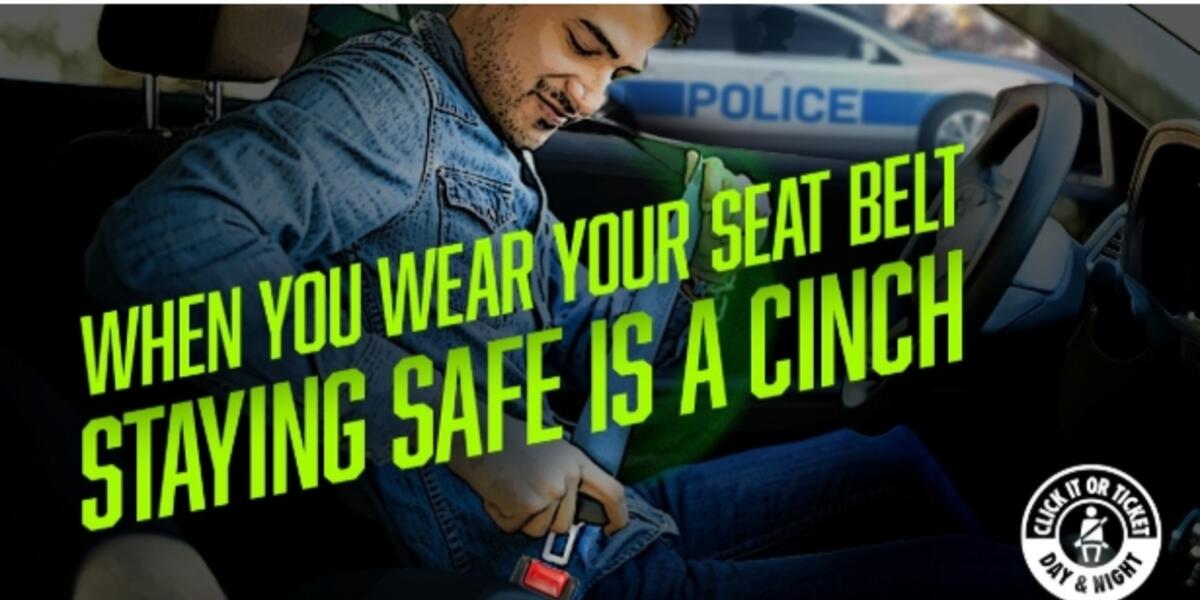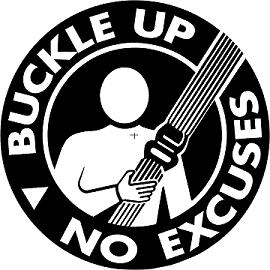No matter what type of vehicle you drive, one of the safest choices drivers and passengers can make is to buckle up.
As you head out around the Memorial Day holiday, you’ll likely see more law enforcement on the roads as part of Click It or Ticket. This campaign, running from May 19 to June 1, reminds drivers and passengers of the importance of buckling up—and the legal consequences, including fines, for not wearing a seat belt.
Fatal crashes on America’s roadways are rising, and a major contributing factor is failure to wear a seat belt. The Federal Motor Carrier Safety Administration (FMCSA) is committed to supporting and protecting commercial motor vehicle (CMV) drivers, including encouraging seat belt use among all CMV occupants.
FMCSA’s campaign reminds drivers that wearing a seat belt:
-
Helps protect them in a crash
-
Complies with the law
-
Increases the chance of making it home safely
In short, the Federal Motor Carrier Safety Regulations (FMCSRs) require seat belts at every seating position in a property-carrying CMV. Additionally, 49 CFR 392.16 states that a CMV with a seat belt assembly installed at the driver’s seat must not be driven unless the driver is properly restrained.
In 2022, 916 commercial truck drivers died in crashes. Of that total, 635—or 69.3%—were not wearing seat belts, according to the National Highway Traffic Safety Administration’s Fatality Analysis Reporting System. That’s the second-highest percentage of driver fatalities without seat belts since 2017.
While an estimated 14% of CMV drivers still don’t wear seat belts, we must recognize the many drivers who prioritize safety by always buckling up. So, why should you buckle up? Here are just a few reasons:
-
It keeps you safe. As a CMV driver, safety on the road is your top priority—and that includes wearing your seat belt.
-
It helps you make it home. Whether it’s to family, friends, or even pets, getting home safely to the people who depend on you is what matters most.
-
It’s the law. CMV drivers take pride in safe driving and their critical role in keeping America moving. Following safety policies and laws is a sign of true professionalism.
Please help keep our roads—and the CMV community—safe by always wearing your seat belt. Sharing this important safety message matters too. View and download educational materials and safety tips below.
CMV Seat Belt Toolkit Tips for Truck and Bus Drivers
Seat Belt Safety for CMV Drivers
Safety belt use remains one of the cheapest, easiest, and most effective ways to protect commercial motor vehicle (CMV) drivers.
Wearing a seat belt also helps prevent serious injury to others. Buckled drivers are better able to maintain control of their vehicles in emergency situations, reducing the risk of additional accidents.
Seat Belt Usage Concerns
As I review our customers’ CSA SMS scores, I continue to see numerous violations for failure to use a seat belt. This violation carries a severity weight of 7 points and negatively impacts a carrier’s Unsafe Driving BASIC score in the CSA SMS.
When drivers operate your vehicles without wearing a seat belt, they create an unnecessary and avoidable risk. Additionally, in states where not wearing a seat belt is a primary offense, this can be the trigger for a full roadside inspection—leading to even more violations beyond just the seat belt issue.
Tips to Increase Seat Belt Usage
-
Implement a clear company policy requiring seat belts to be worn in all company vehicles whenever the vehicle is in motion.
-
Include defined disciplinary actions in your policy for drivers who receive a seat belt violation.
-
Order trucks with brightly colored seat belts (e.g., orange or yellow) to make non-usage more visible and easier to enforce.
-
Consider offering a seat belt life insurance policy as an incentive. This policy would pay a benefit to the driver’s beneficiary if they are killed in an accident while wearing a seat belt in one of your vehicles.
Does Your Company Driver Policy Address Seat Belt Usage?
Seat Belt Myths — Debunked
MYTH 1:
Safety belts are uncomfortable and restrict movement.
FACT:
A Transportation Research Board study on commercial drivers’ seat belt usage found that most drivers do not find seat belts uncomfortable or too restrictive. When properly adjusted, discomfort is minimal—and correct seat, lap, and shoulder belt positioning can greatly reduce any restriction.
MYTH 2:
Wearing a safety belt is a personal decision that doesn’t affect anyone else.
FACT:
Not wearing a seat belt affects more than just you—it puts your family, loved ones, and other motorists at risk. Seat belts help drivers maintain control in a crash, which can prevent additional harm. Plus, it’s the law: Federal regulations require all commercial vehicle drivers to buckle up.
MYTH 3:
Safety belts prevent escape from a burning or submerged vehicle.
FACT:
Seat belts actually increase your chances of escape by preventing you from being knocked unconscious. Fires or submersions occur in less than 5% of fatal large-truck crashes.
MYTH 4:
It’s better to be thrown clear of the wreckage in a crash.
FACT:
You’re four times more likely to die if thrown from a vehicle. In 2004, 168 truck drivers died after being ejected from their cabs during a crash.
MYTH 5:
It takes too much time to buckle up 20 times a day.
FACT:
Buckling your seat belt takes about three seconds. Even doing it 20 times a day adds up to just one minute total.
MYTH 6:
Good truck drivers don’t need to wear safety belts.
FACT:
Even the best drivers can be hit by bad drivers, experience mechanical failures, or face unexpected weather conditions. A seat belt protects against injuries by preventing ejection and safeguarding your head and spine—even when it’s not your fault.
MYTH 7:
A large truck protects you—seat belts aren’t necessary.
FACT:
In 2022, 916 commercial truck drivers were killed in crashes. Of those, 634 were not wearing seat belts. A large truck doesn’t guarantee protection—seat belts do.
MYTH 8:
Seat belts aren’t necessary for low-speed driving.
FACT:
In a 30 mph frontal crash, an unbelted person continues moving at 30 mph—hitting the windshield with the same force as falling from a three-story building.
MYTH 9:
A lap belt alone offers sufficient protection.
FACT:
The combination of a lap and shoulder belt holds a driver securely in place during a crash. This reduces the risk of serious injury or death and helps the driver maintain control of the vehicle.










